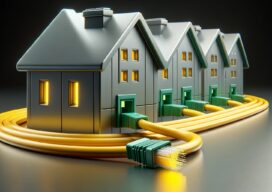All posts by Linda Duffy

The Growing Role of Geospatial Technology in High-Speed Connectivity for All
How mobile mapping is providing a reality capture solution for an ambitious fiber-to-the-home initiative in Ontario, Canada Investments in fiber-to-the-home or FTTH support digital equity to provide new economic, education, and public health opportunities in rural and remote areas. They also present a potential growth market for surveying companies and utilities service providers as countries...

Personnel Moves
Questions and Answers How the NSPS is working to tap new sources to expand the surveying labor pool In an interview with xyHt’s Linda Duffy, NSPS president-elect Davey Edwards, shares information about ongoing NSPS initiatives intended to alleviate shortages of qualified workers in the survey profession. Edwards is survey director for Baseline|DCCM, What would...

Drones in School
STEM education is preparing the next generation of workers for exciting careers in technology-related fields.

A New Perspective with Drone Photogrammetry
Geotechnical engineers say drones offer a safer, faster method of data collection to identify potential geohazards and assist with mitigation along vulnerable transportation corridors. Mountain roadways are prime locations for geohazards, such as rockfalls, landslides, and debris flows. These events result in road closures, injuries, and property damage, sometimes triggered by thaw/freeze cycles or...

Surveying for Safety at Waipio Valley
Lush vegetation, beautiful ocean vistas, and a historic Hawaiian valley provide the setting for a complex engineering project that addresses technical and cultural concerns. The Waipio Valley on the island of Hawaii has great historical significance within Hawaiian culture. Known as the Valley of Kings, it was home to many generations of the royal family...

Built for Danger
While the operator stays safe, indoor drones carrying lidar and SLAM technology create a 3D map of the inside of hazardous spaces Nuclear power plants, ballast tanks, underground mines, toxic chemical plants, sewers, offshore oil storage, decommissioned industrial facilities—none of these are places suitable for humans; yet monitoring and inspection of the interiors are often...
